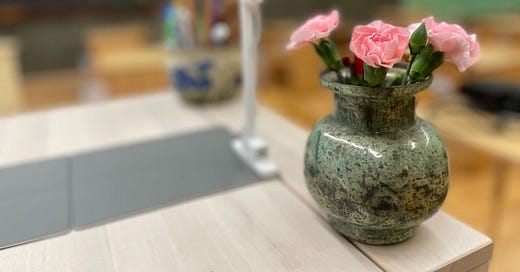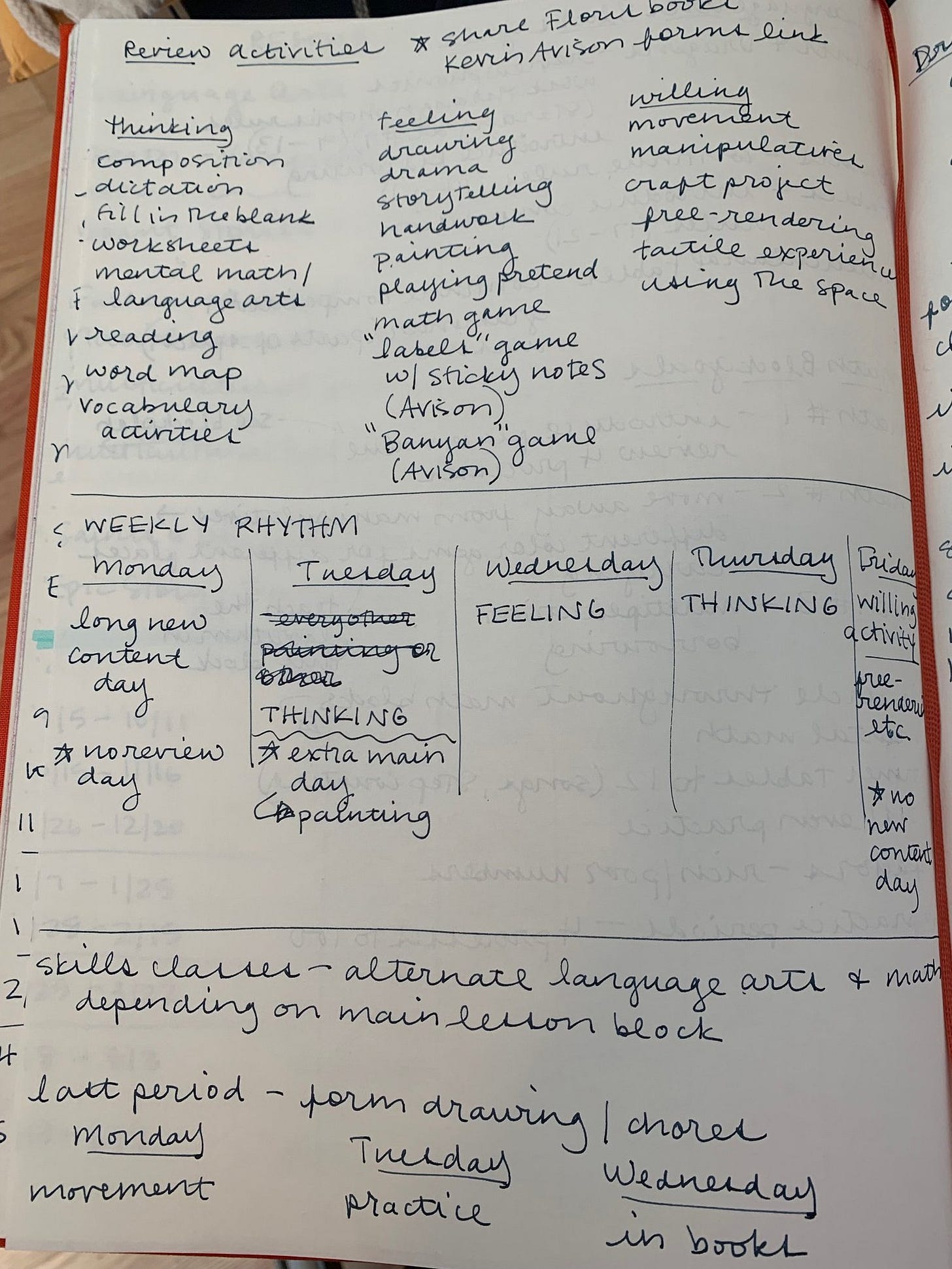Main Lesson: Swimming in a Sea of Possibility
😩 Create a plan so you're NOT overwhelmed with potential
Lately, I’ve been thinking a lot about striking the right balance between repetition/routine/rhythm and new/exciting/interesting. In my journey as a teacher, I have leaned towards one or the other at various times, searching for the right balance.
When I first started teaching, “new and exciting” was my go-to strategy. I thought that if I didn’t have my students’ attention, it was because I wasn’t being interesting enough. So, if I had a particularly difficult lesson, that night I would stay up late trying to put together something really exciting, fun, and interesting.
I didn’t think much about discipline—I took full responsibility for my students’ engagement with our lessons. And I didn’t consider that rhythm and structure were also tools I could use to engage their interest.
I think the fact that I started in the middle school was a huge part of this. Compared to first graders, middle schoolers tend to be more engaged with captivating content, rather than rhythm and routine.
Thank goodness I realized at some point that repetition and routine were important tools in the classroom. And I also realized that incorporating more rhythm and routine was an approach that aligned better with my own preferences. I’m a true phlegmatic and I absolutely thrive on structure and rhythm.
Creating sustaining systems and structures has become one of my strengths as a teacher, and it’s a message that I try to bring in my mentorship work. I try to help teachers see that every main lesson does not need to be planned from scratch. And it’s possible to have a planning routine that requires just 30-45 minutes of planning per day.
What’s better is that when you create a planning structure, you can better ensure that you’re meeting your students’ needs. When we plan every lesson anew, we tend to rely on our own vague sense of what our students might need next. If we incorporate a planning system, we can map things out ahead of time, creating a rotation of activities that give our students what they need, so we can be certain that they’re getting those experiences regularly.
Review Activities Rhythm
This is really important when it comes to review activities. Students need regular practice to strengthen their skills, and if you skip writing (or painting, or drawing, or . . .), their skills are going to suffer.
One year I came up with this structure to guide our review activities that focused around thinking, feeling, and willing, and I created a list of possible activities to choose from.
Using our weekly schedule as a guide, I decided on the following structure for our review activities:
Monday: no review
Tuesday: Thinking Activity (usually this was a writing day)
Wednesday: Feeling Activity
Thursday: Thinking Activity
Friday: Willing Activity (in the lower grades this was usually free rendering)
I loved having this list of activities to select from as I planned out each week. I usually planned these activities on Sundays so that every night, all I had to do was plan the next day’s new content.
I often had a rough idea of these activities when I mapped out the block. At the beginning of each block I created the plan for each week and recorded it on a block plan document, which I shared with parents. I definitely warned that the plan was subject to change, but I loved having the plan in place and I actually appreciated that it kept me accountable for getting through the content and making sure those practice activities happened as they should.
If you’re a paid subscriber, make sure you scroll down to download my block plan template.
What are the rhythms and routines that keep your lessons chugging along, and prevent you from approaching each lesson as an overwhelming sea of possibility? I’d love to hear about them. Leave a note in the comments.
Keep reading with a 7-day free trial
Subscribe to Waldorf at Work to keep reading this post and get 7 days of free access to the full post archives.






